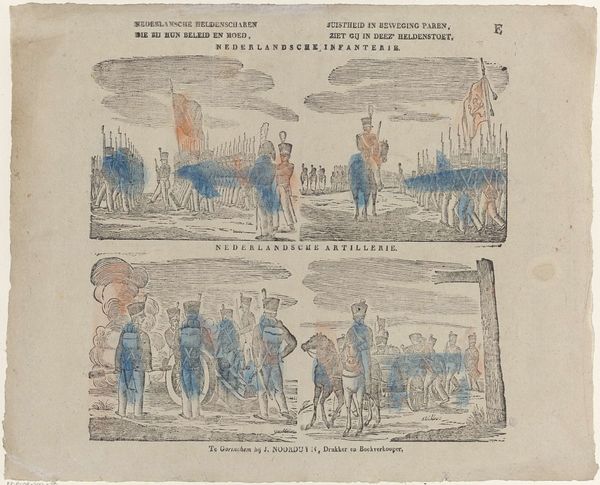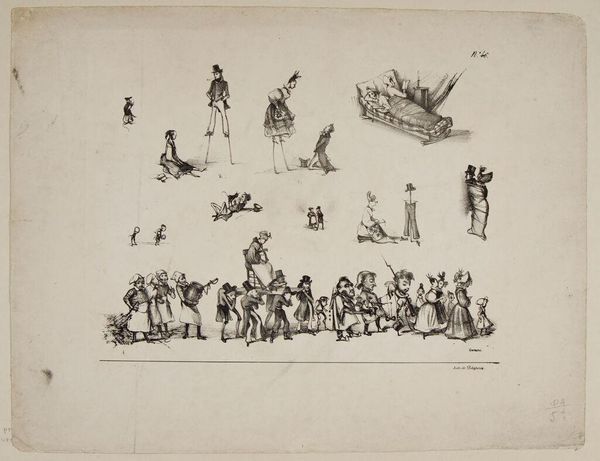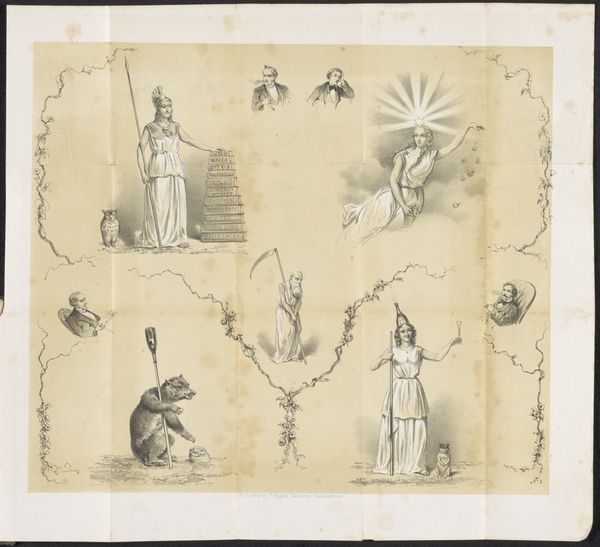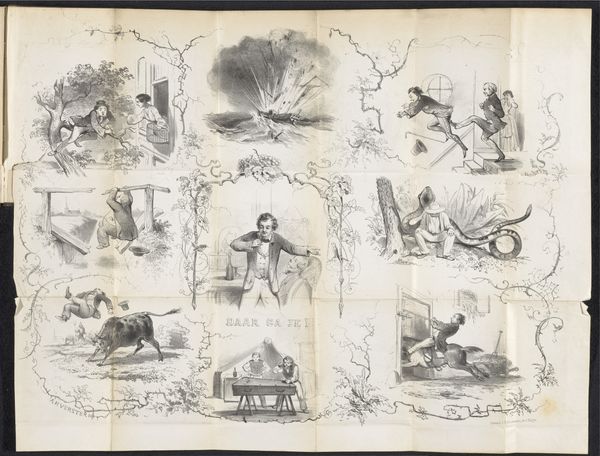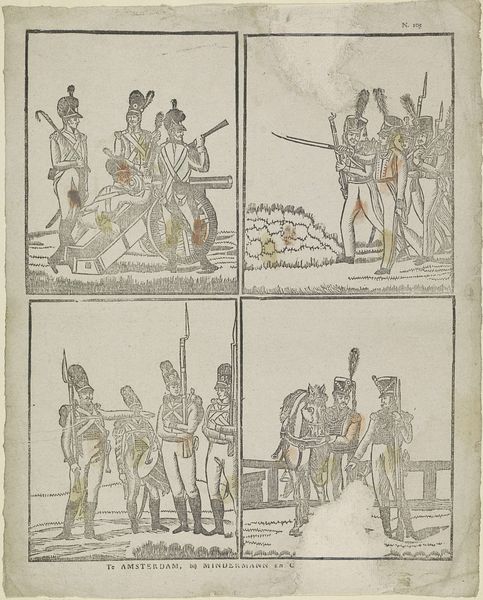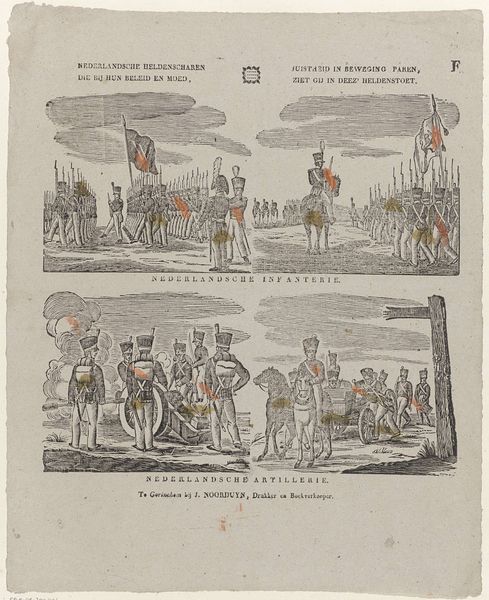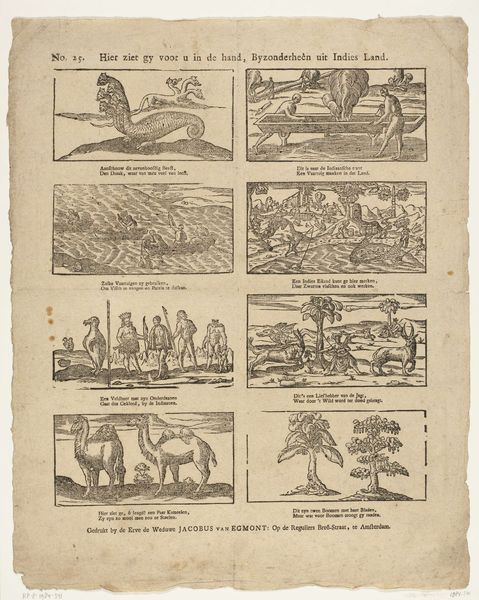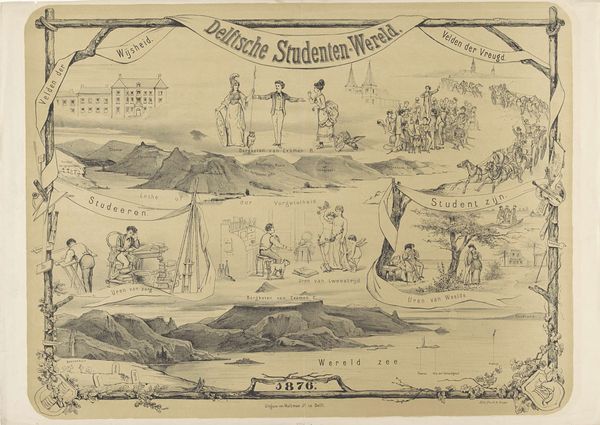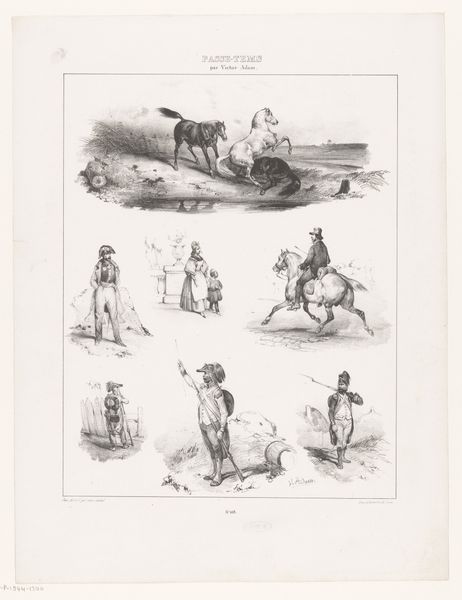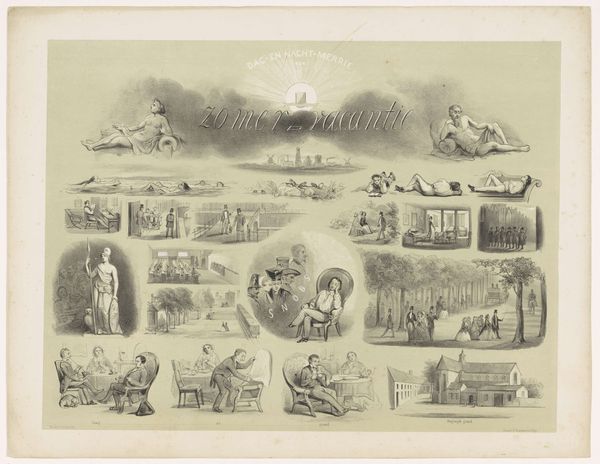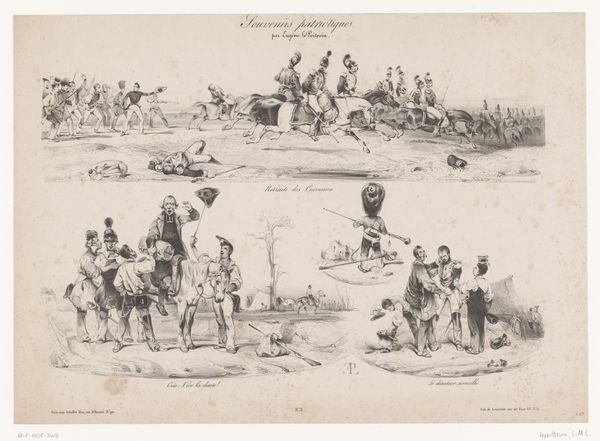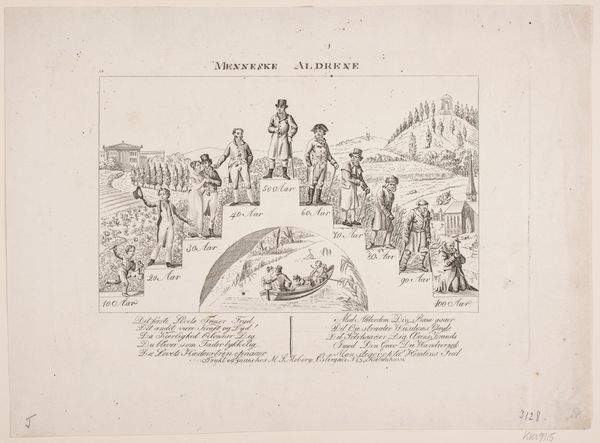
Nederlandsche heldenscharen / Die bij hun beleid en moed, / Juistheid in beweging paren, / Ziet gij in deez' heldenstoet 1819 - 1840
0:00
0:00
print, engraving
#
comic strip sketch
#
weapon
#
quirky sketch
# print
#
sketch book
#
personal sketchbook
#
idea generation sketch
#
sketchwork
#
pen-ink sketch
#
sketchbook drawing
#
history-painting
#
storyboard and sketchbook work
#
sketchbook art
#
engraving
#
realism
Dimensions: height 425 mm, width 326 mm
Copyright: Rijks Museum: Open Domain
This print of Dutch soldiers was created by Alexander Cranendoncq sometime in the first half of the 19th century. It’s an etching, a printmaking process that relies on the corrosive power of acid to create lines in a metal plate. In etching, a metal plate is coated with a waxy, acid-resistant material. The artist then scratches through this coating with a needle-like tool, exposing the metal underneath. When the plate is immersed in acid, the exposed lines are eaten away, creating grooves. The deeper the lines, the more ink they will hold, and the darker they will appear in the final print. Consider how this technique allows for the depiction of the linear precision of the troops and the artillery. Think too about the labor involved – the repetitive action of etching, mirrored in the ordered ranks of the soldiers. This print offers a fascinating glimpse into both military discipline, and the skilled craft required to represent it. It blurs the distinction between the fine arts and the detailed work of artisans, suggesting a connection between artistic skill and military order.
Comments
No comments
Be the first to comment and join the conversation on the ultimate creative platform.
